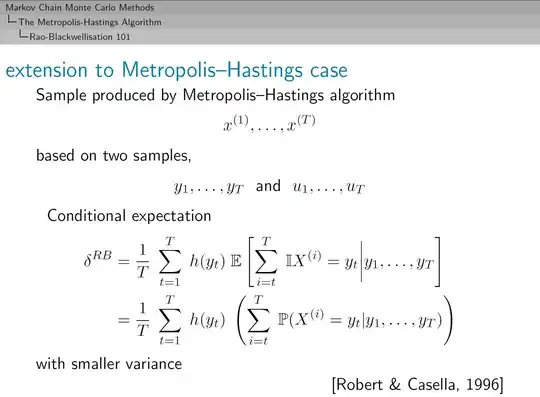Suppose we run the Metropolis-Hastings with target distribution $\mu$ to compute the integral $\int f\:{\rm d}\mu$. Usually, we use the estimator $$A_n:=\frac1n\sum_{i=0}^{n-1}f(X_i).$$ However, instead of adding up the $f(X_i)$, I've seen the following modification: Let $(Y_n)_n$ denote the sequence of proposals. By definition, $Y_i$ is accepted and $X_i$ is set to $Y_i$ with probability $\alpha(X_{i-1},X_i)$. Instead of adding $f(X_i)$ to the sum, we could add $(1-\alpha(X_{i-1},Y_i))f(X_{i-1})+\alpha(X_{i-1},Y_i)f(Y_i)$.
I couldn't find any lecture book or paper considering this modification or an estimator modified in a similar way (except this paper). Does anybody have a reference at hand?
